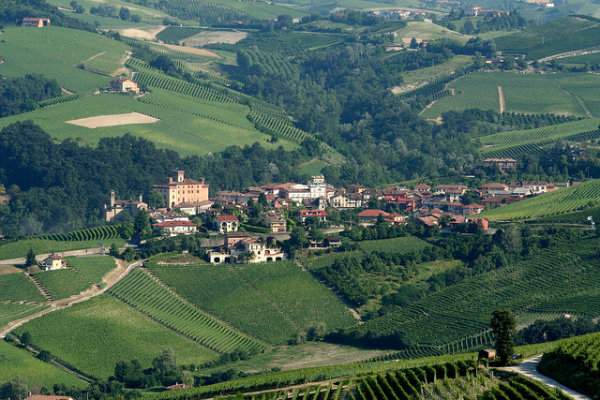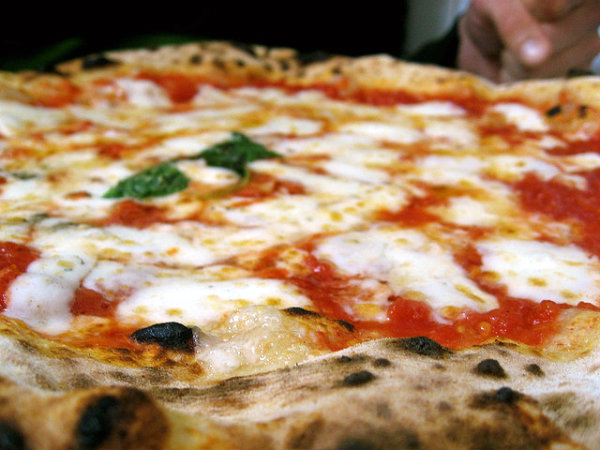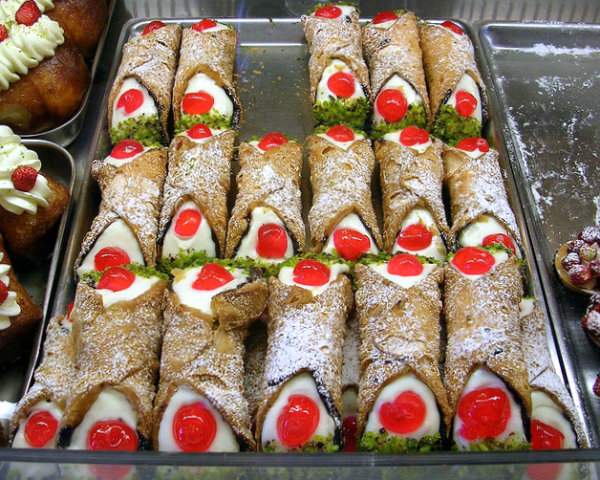For some of us, eating great food is a major to-do item no matter where we travel (or, heck, even when we’re at home). But when one is talking about a visit to Italy, if the food isn’t one of the things you’re most excited about, you might be a little dead inside.
The truth is that you can (and will) find excellent food throughout Italy – but even in this culinary heaven, there are destinations that are particularly famous among foodie travelers. If you’d like to really send your tastebuds into orbit, you’ll include one or two of these spots on your next trip to Italy.
[social]
These destinations are by no means the only places that are great for foodies visiting Italy, but they’re certainly food-related highlights. They’re listed from north to south, so you can easily roll from the top to the bottom of the boot as your belly gets more and more full. You’re welcome.
Buon appetito!
Piedmont

If you’re going to do a foodie trip through Italy, you might as well start big. Thankfully, that’s easy to do in the Piedmont region. The region’s biggest city is Turin, the Alps nearly surround it, and it’s famous for two incredibly high-end Italian delicacies: wine and white truffles.
The area around Alba is a good place to focus your foodie excursions in Piedmont, since this is where you’ll find the area’s best-known wines – Barolo, Barbera, and Barbaresco among them. Ordering a carafe of the house wine is a good bet throughout Italy, since it’s usually cheaper than buying by the bottle and it’s excellent quality, but when you’re in Piedmont it’s an even better idea. You’ll be hard-pressed to find a better deal on some of Italy’s most sought-after wines when you’re this close to some of Italy’s best vineyards.
Truffle-hunting season is in the fall, which is also when Alba hosts an annual white truffle festival, so if you’re an ardent fan of the costly fungus you’ll want to plan an autumn trip. Chances are you won’t be buying your own truffles, but you can certainly splurge on a few shavings over pasta in a Piedmont restaurant.
For those of you with more than one sweet tooth, don’t miss a taste of Turin’s contribution to the dessert world – gianduja, or chocolate-hazelnut paste. There are gianduja chocolate candies available in sweet shops all over the city (look for those made by Caffarel, as they came up with the idea in the 1850s), and the flavor combination is so popular that it’s now known worldwide in the form of Nutella – a company which started in Turin in 1946.
Visitor Tips:
You can get to Turin by train easily, but to really explore the smaller towns in the wine and truffle areas you’ll be better off renting a car. Keep in mind that although the fall is a shoulder season in many places, it’s still part of the high season in much of the Piedmont region thanks to the fall food festivals that draw people from all over the world. If you’re more intrigued by the sweets than the wine or truffles, note that Turin’s annual chocolate festival happens in late February or early March, which is a great off-season time to visit.
>> Read more about the Piedmont region, Alba’s famous white truffles, and Turin’s chocolate festival
Bologna

Italians tend to be quite ethnocentric when it comes to their favorite foods – it’s not just the food of their region they prefer, but that of their town (or their mother!). But many Italians are willing to concede that if you want to visit the city with the best cuisine in the whole country, you’ve got to go to Bologna.
Bologna has many nicknames – one of which is “the fat one,” which alludes to both its excellent food and comparative wealth. The Emilia-Romagna region (of which Bologna is the capital) is where things like parmigiano-reggiano cheese, prosciutto, and balsamic vinegar are all made, and Bologna itself is famous for its tortellini in brodo, or tortellini pasta served in a light broth.
Two foodstuffs that got their start in Bologna are quite familiar outside Italy are mortadella and bolognese sauce. Mortadella is a pork sausage that’s excellent in Italy and yet somehow gets transformed into the overly-processed Oscar-Meyer “baloney” lunchmeat most of us grew up with. Rest assured, the version you’ll find in Bologna bears little resemblance to its namesake across the pond.
Bolognese sauce is simply a sauce from Bologna – hence the name – and it’s a very meaty tomato sauce. In Bologna, however, it’s just called ragu (which means “sauce”), so when you see a dish on a menu listed as “al ragu,” it means it’s cooked in or topped with a meaty tomato sauce.
One non-food perk of visiting Bologna is that although it’s on Italy’s high-speed train line and not terribly far from major tourist cities like Florence, it remains far less visited than other big cities in Italy. It’s home to the world’s oldest university, so there’s a great energy in the city almost year-round, but it’s still a bit off-the-beaten-path.
Visitor Tips:
As mentioned, Bologna is on the high-speed rail line in Italy, which means you can get from Milan to Bologna in a little more than an hour. The trip from Florence to Bologna is even shorter – it’s less than 40 minutes one-way. This means Bologna is a viable day trip from either Milan or Florence, or vice versa. Make Bologna your home base and visit Florence as a day trip, giving you more time in the decidedly less touristy Bologna. Also of note, speed junkies will likely want to rent a car for a day to visit the nearby factories/museums of Ferrari, Lamborghini, and Ducati.
>> Read more about the Emilia-Romagna region, the city of Bologna, and check the schedules for the high-speed trains in Italy
Naples

Few foods are more ubiquitous around the world than pizza, which is one of the main reasons it makes sense to head for Naples on a foodie tour of Italy – because there is absolutely nothing like tasting pizza in the city where it was born.
By the time you reach Naples, you’ll probably have eaten a pizza (or twelve) in Italy. You might even be a little sick of pizza. You need to put that aside and eat pizza every single day you’re in the city anyway. Pizza is different here. Most of the pizza places you’ll see have the “Vera Pizza Napoletana” sign out front, meaning their pizzas are certified by the pizza governing body (yes, there really is one) as being true representations of the traditional Neapolitan pie.
It should be noted here that pizza in Naples (and in much of Italy) is meant to be eaten with a knife and fork, and pies are single-serving – they don’t get sliced into triangles, and they aren’t meant to be picked up. Pizzas in Naples tend to be more – and this isn’t going to sound appetizing, I get that – liquid-y than you’d expect. The toppings are simple (no “everything pizza” here), but the cheeses are fresh, which means there’s a higher water content that makes its way onto the pizza when it’s cooked. No, you can’t pick this one up without making a mess – but trust the pizza masters on this one, they’re delivering some of the best-tasting pizzas you’ll ever have in your life.
Keep in mind that the Campania region (Naples is the capital of Campania) is where key pizza ingredients like tomatoes and mozzarella either got their foothold or their start in Italy, so the rest was probably just a matter of time.
Visitor Tips:
Naples is the southernmost stop on Italy’s high-speed rail line, so you can get there from Rome in about 1 hour 15 minutes. This can be a tricky city to love – there’s absolutely no red carpet laid out for visitors, folks – but if you do a little research beforehand you’ll have a much better chance of enjoying all Naples has to offer (not the least of which is an excellent base for exploring Pompeii, Herculaneum, Sorrento, and the Amalfi Coast).
>> Read more about how to love Naples, where to find Naples’ best pizza, and doing a DIY day tour of Pompeii and Herculaneum
Sicily

The island of Sicily, thanks to its position in between a bunch of bigger land masses, has been something of a whipping boy for about 2,000 years. Conquered and re-conquered time and time again, Sicily’s history, architecture, and culture are a bit of a hodge-podge combination of the best parts of whoever was in charge – and the same goes for the cuisine.
Today, most of the dishes you’ll find in Sicily will look largely Italian – pasta is a staple, as are fresh vegetables and local fish – but some of the flavors that find their way onto your plate aren’t common anywhere else in Italy. Culinary influences include Arab, North African, Spanish, and Greek – which, when mixed all together and added to a healthy dose of Italian cuisine, create a flavor palate that’s utterly unique.
Caponata, an eggplant dish made with sweet vinegar (and one of Sicily’s best-known dishes), showcases the island’s fascination with all things sweet-and-sour. As you’d expect of an island, seafood is popular and plentiful just about everywhere in Sicily, and the cultural mish-mash means you’ll sometimes find the local fish served with couscous. Sicilians also like their fried treats, including arancini – deep-fried balls of rice that have a bit of meat sauce or mozzarella at their center.
The Sicilian sweet tooth is treated to a number of local goodies, including cannoli and gelato – and in Sicily, gelato is often served in a sweet brioche bun. Granita – an icy concoction similar to sorbet, but less solid – is a summertime favorite, especially at breakfast. Dried and candied fruits are common, and visitors to Sicily in the winter will be treated to some of the best citrus fruits anywhere.
Visitor Tips:
Sicily’s position may have meant it was an easy target for plunderers, but nowadays it’s the fact that it has relatively mild weather year-round that helps make it so appealing. Visitors can fly directly to one of the island’s three airports, or take a boat across from the mainland. There’s even a boat that has train tracks embedded in the floor so the train can roll right on and off – hugely time-consuming, but kind of fun to watch if you’re not in a hurry.
>> Read more about how to get to Sicily from the Italian mainland, what to do in Palermo, and the budget airlines that fly to Sicily
Plan your own foodie trip through Italy:
- Find cheap airfare to Rome
- Learn what to look for when you’re eating in Rome
- Book an Italian vacation rental so you can cook some of your own meals
- Stay in an agriturismo and take cooking classes
- Take a food-centric guided tour of Tuscany
photos by Megan Mallen, Alessandro Capotondi, Sami Keinanen, fazen
